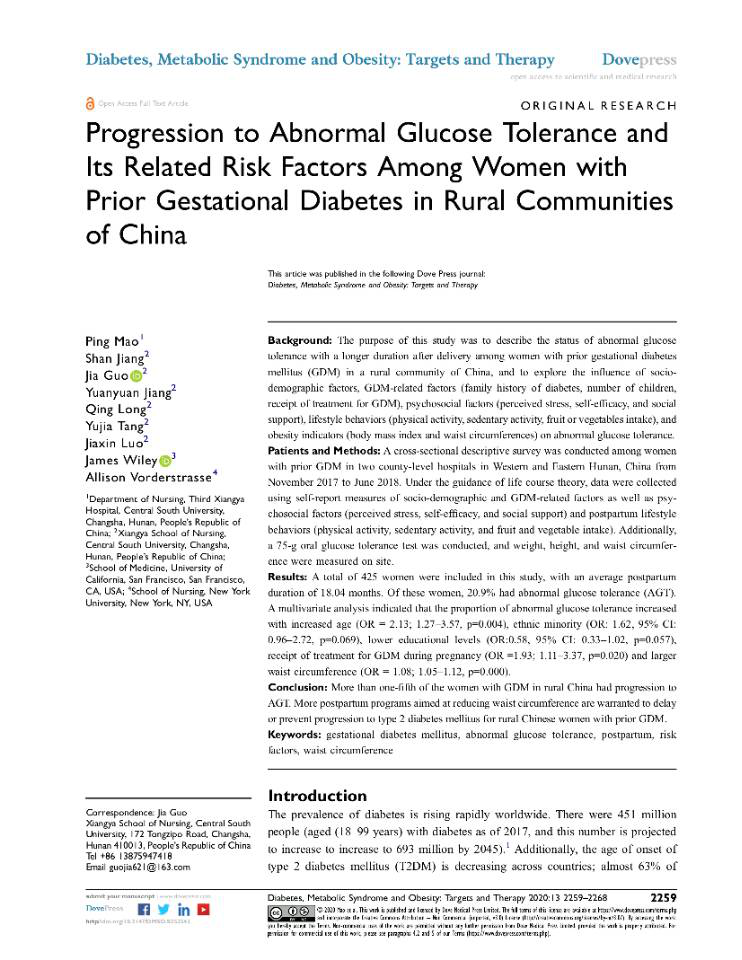Impact Factor:2.842
DOI number:10.2147/DMSO.S252542
Affiliation of Author(s):中南大学
Journal:Diabetes Metabolic Syndrome Obesity
Place of Publication:英国
Key Words:abnormal glucose tolerance; gestational diabetes mellitus; postpartum; risk factors; waist circumference.
Abstract:Background: The purpose of this study was to describe the status of abnormal glucose tolerance with a longer duration after delivery among women with prior gestational diabetes mellitus (GDM) in a rural community of China, and to explore the influence of socio-demographic factors, GDM-related factors (family history of diabetes, number of children, receipt of treatment for GDM), psychosocial factors (perceived stress, self-efficacy, and social support), lifestyle behaviors (physical activity, sedentary activity, fruit or vegetables intake), and obesity indicators (body mass index and waist circumferences) on abnormal glucose tolerance. Patients and methods: A cross-sectional descriptive survey was conducted among women with prior GDM in two county-level hospitals in Western and Eastern Hunan, China from November 2017 to June 2018. Under the guidance of life course theory, data were collected using self-report measures of socio-demographic and GDM-related factors as well as psychosocial factors (perceived stress, self-efficacy, and social support) and postpartum lifestyle behaviors (physical activity, sedentary activity, and fruit and vegetable intake). Additionally, a 75-g oral glucose tolerance test was conducted, and weight, height, and waist circumference were measured on site. Results: A total of 425 women were included in this study, with an average postpartum duration of 18.04 months. Of these women, 20.9% had abnormal glucose tolerance (AGT). A multivariate analysis indicated that the proportion of abnormal glucose tolerance increased with increased age (OR = 2.13; 1.27-3.57, p=0.004), ethnic minority (OR: 1.62, 95% CI: 0.96-2.72, p=0.069), lower educational levels (OR:0.58, 95% CI: 0.33-1.02, p=0.057), receipt of treatment for GDM during pregnancy (OR =1.93; 1.11-3.37, p=0.020) and larger waist circumference (OR = 1.08; 1.05-1.12, p=0.000). Conclusion: More than one-fifth of the women with GDM in rural China had progression to AGT. More postpartum programs aimed at reducing waist circumference are warranted to delay or prevent progression to type 2 diabetes mellitus for rural Chinese women with prior GDM.
Note:Q3区
Co-author:Shan Jiang, Yuanyuan Jiang, Qing Long, Yujia Tang, Jiaxin Luo, James Wiley, Allison Vorderstrasse
First Author:Ping Mao
Indexed by:Journal paper
Correspondence Author:Jia Guo
Discipline:护理学
Document Type:J
Volume:13
Page Number:2259-2268
Translation or Not:no
Included Journals:SCI


